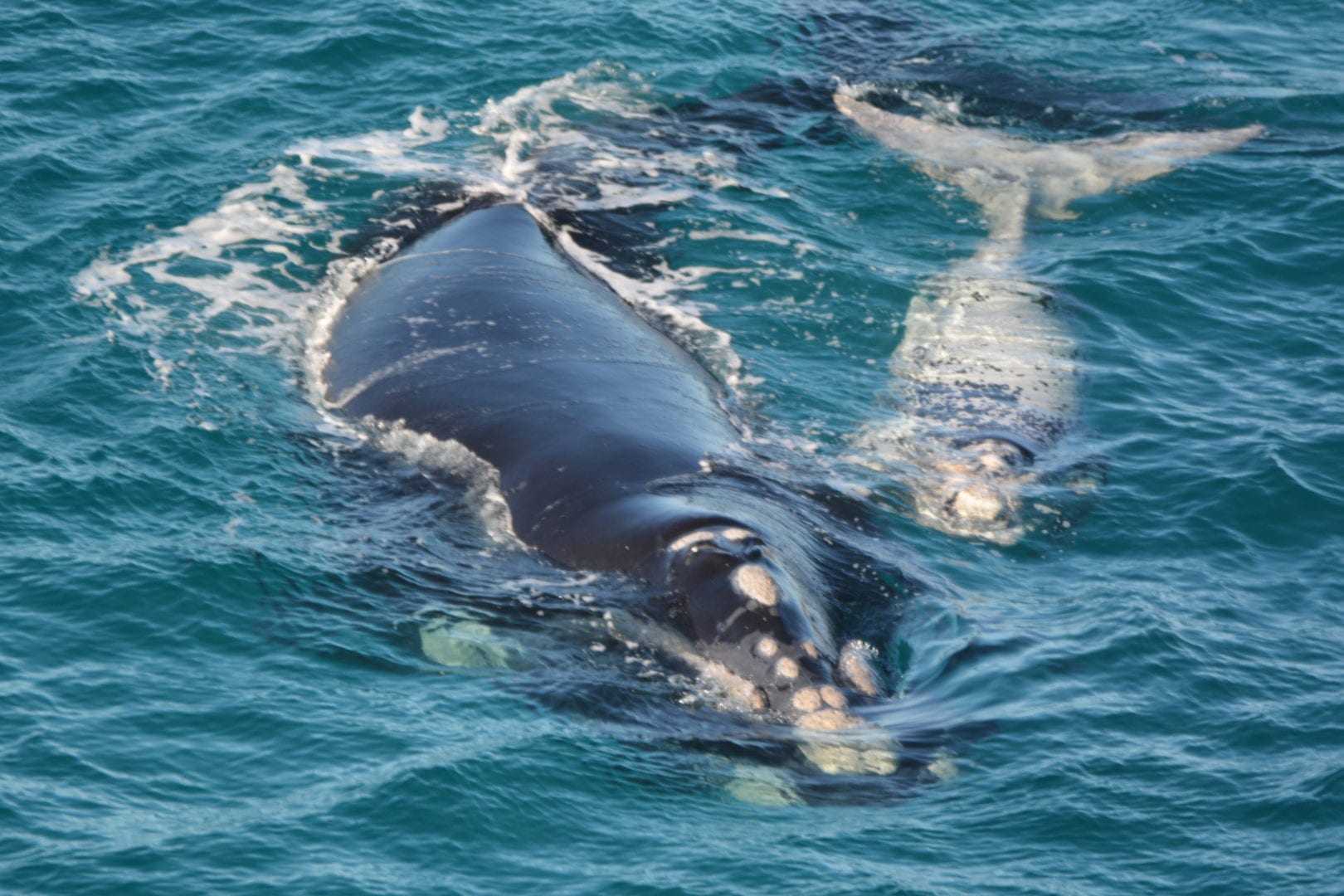Southern right whale numbers are on the increase with the long-term population monitoring study through Curtin University recording over 200 whales in the Great Australian Bight, South Australia during this year’s calving season.
PhD candidates Claire Charlton and Rhianne Ward, and volunteer researcher Alice Morrison, from Curtin’s Centre for Marine Science and Technology (CMST) have been studying the southern right whales at Head of Bight and Fowlers Bay in South Australia for the past two months.
 Up to 74 females and their newborn calves and 27 unaccompanied adults were recorded on a single day at Head of Bight, and 20 female-calf pairs and two unaccompanied adults in Fowlers Bay.
Up to 74 females and their newborn calves and 27 unaccompanied adults were recorded on a single day at Head of Bight, and 20 female-calf pairs and two unaccompanied adults in Fowlers Bay.
Ms Charlton said the numbers have not yet reached daily sightings of 172 whales that were recorded in 2016, but that the high numbers in the area are a good sign for their long-term increase.
“Southern right whales are long-lived and slow to reproduce with calving occurring every three years on average. The number of females that calve in Australian waters each year vary and it is important to monitor the whales annually to assess recovery and changes to the population,” Ms Charlton said.
“Head of Bight is the largest calving ground in Australia and the Great Australian Bight Commonwealth Marine Reserve Marine Mammal Protection Zone provides protection for the whales during their calving and breeding season between May and November.”
Scientists have been researching the long-term abundance, distribution and life history parameters of southern right whales at Head of Bight since 1991 and working with Fowlers Bay Eco Tours at Fowlers Bay to study population biology and underwater acoustics for the past six years. The research outputs are a key part of conservation management of the species.
Ms Ward said the Curtin University research activities include population census, photo identification and noise monitoring. Researchers use nearshore loggers and handheld hydrophones to record southern right whale vocalisations.
“Underwater acoustics is a non-invasive method for assessing whale presence and distribution, and it is particularly useful for understanding movements in offshore waters and in areas where poor weather conditions limit vessel-based surveys,” Ms Ward said.
Curtin University Associate Professor Robert McCauley from CMST, has been overseeing the project and says a southern right whale dataset of this integrity and length is incredibly important.
“The data sets being collected are unique and irreplaceable and will play a crucial role in protecting the southern right whale populations into the future,” Associate Professor McCauley said.
The data sets are then used to study life history information such as calving intervals, migration rates and age of sexual maturity, which influence population recovery.
The information recorded is provided to government departments, the science community, oil and gas industry, and general public to inform recovery assessments, conservation management and detection of changes to the population over time.
Southern right whales migrate annually from southern feeding grounds to warmer, sheltered waters in Australia to breed, calve and rest during the Austral winter (May to October). They grow up to 18 metres long and can be distinguished from other whales due to their dark skin, broad back and lack of dorsal fin.
Southern right whales can be identified through the unique patterns of callosities on their head (keratinised skin patches colonised by cyamids or lice) which allow individuals to be studied over time.
The study is supported by both private sector and government, including oil and gas operators Santos, Murphy Oil and Karoon Gas Australia. Research is carried out on Yalata Aboriginal Lands with support from Aboriginal Lands Trust, as well as data collection support from Fowlers Bay Eco Tours.
More information on the Great Australian Bight Right Whale Study can be found online. You can also learn more about Curtin University’s Centre for Marine Science and Technology here.


